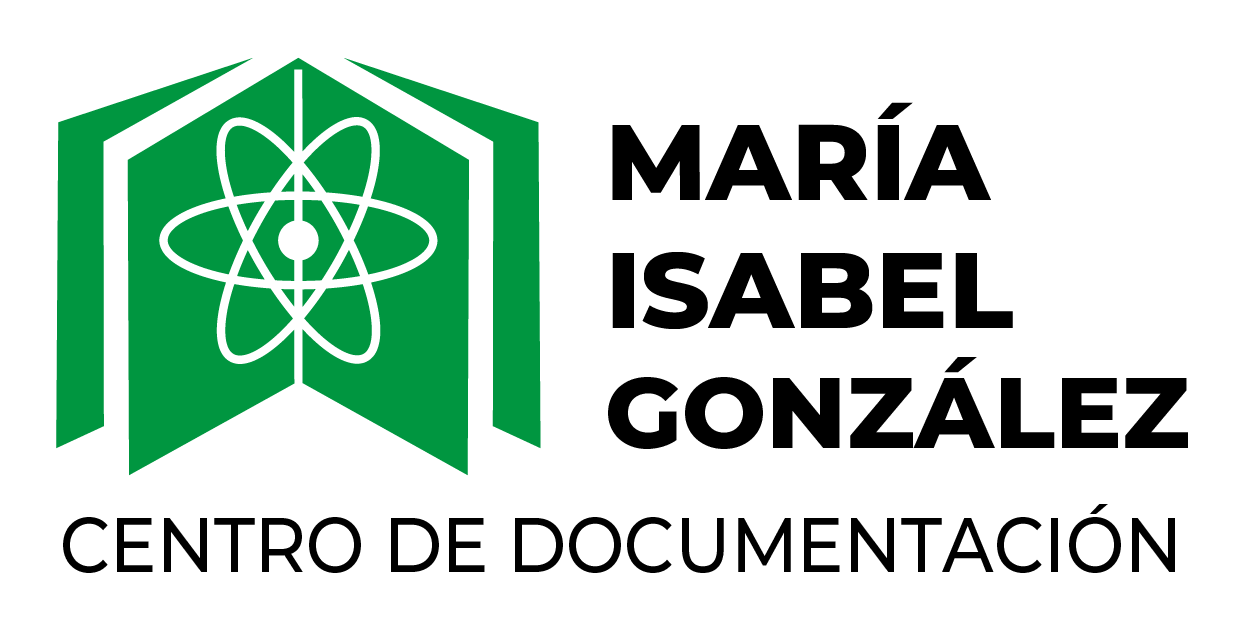Modelo de la impureza de Anderson: Soluciones diagramáticas y aplicaciones .
Material type: Computer filePublication details: 2009.Description: 128 pSubject(s): Dissertation note: Tesis para optar al título de Doctor en Ciencia y Tecnología de Materiales, mención en Física. Director/es: Llois, Ana María; Vildosola, Verónica L. Summary: En este trabajo se han abordado distintas técnicas diagramáticas para resolver el Hamiltoniano de la impureza de Anderson. Estas técnicas resultan muy convenientes para resolver en un amplio rango de temperaturas Hamiltonianos que modelan sistemas fuertemente correlacionados que involucran varias bandas. Las técnicas diagramáticas permiten trabajar sobre el eje real de las energías y estudiar propiedades termodinámicas tanto estáticas como dinámicas de manera relativamente sencilla y natural. Partiendo de la aproximación non-crossing (NCA) que supone repulsión Coulombiana infinita en el sitio de la impureza, se han implementado varias extensiones de la misma que consideran repulsión finita y distintas aproximaciones para las correcciones devértice. Los distintos esquemas de resolución implementados fueron utilizados para estudiarpropiedades de sistemas reales. En particular, se han calculado desdoblamientos porcampo cristalino, estado fundamental y temperaturas de Kondo de algunosintermetálicos de Cerio, dependencia con sustrato y dirección de crecimiento de este último de la temperatura de Kondo de átomos de cobalto depositados sobre superficies de metales nobles y, finalmente, la conductancia en función de la temperatura de impurezas de níquel adsorbidas sobre una cadena de oro. En los primeros dos casos se han podido interpretar resultados experimentales y en el último caso se ha predicho la evolución del transporte en estas junturas al entrar en el régimen Kondo en acuerdo con estudios teóricos previos. En las aplicaciones mencionadas, el tratamiento de los sistemas en estudio ha tenido en cuenta no sólo la correlación fuerte sino también su estructura electrónica, obtenida a partir de cálculos de primeros principios o usando muy buenas parametrizaciones de las interacciones dentro de un Hamiltoniano de uniones fuertes. La extensión denominada One Crossing Approximation (OCA) implementada en esta tesis es una de las técnicas diagramáticas más precisas y sofisticadas, recientemente conocida por la comunidad de sistemas fuertemente correlacionados, que sería usada para obtener el comportamiento local de redes de sitios fuertemente correlacionados en el marco de una futura implementación de la Teoría de Campo Medio Dinámico (DMFT).Summary: Several diagrammatic techniques to solve the Anderson Impurity model have been implemented along this thesis. These techniques are very convenient to deal with highly correlated multiband problems within a wide range of temperatures. They allow to work in the real time axis and this fact makes it feasable to calculate and study static and dynamic thermodynamic properties. Starting from the non-crossing approximation (NCA), which assumes an infinite on-site Coulomb repulsion U in the impurity site, several extensions have been applied considering a finite U. Some of them imply different approximations to the vertex corrections of the interactions excepts for the One CVrossing Approximation (OCA) which solves these vertex corrections exactly. The several diagrammatic techniques implemented in this thesis have been applied to different real systems. First, the crystral -field splittings, the determination of the ground state symmetry and the Kondo temperature have been calculated for some intermetallic cerium compounds. Then, the dependence of the Kondo temperature of cobalt atoms deposited on noble metal surface on substrate and surface orientation has been studied. And, finally, the conductance as a function of temperature of niquel impurities deposited on a gold chain have also been carried out. In the first two cases, the results helped to interpret the experimental data, while in the last one, they have predictive character and agree well with previous theoretical studies. The application of the different techniques mentioned above, has been done considering not only the strong on-site correlation but also the electronic structure of the involved materials. These electronic structures have been extracted from ab initio calculations or from very good and trustable parametrizations of the interactions of a tight binding Hamiltonian. The implemented OCA scheme resulting from this thesis is one of the more precise and sophisticated techniques recently known in the community and, it represents a very promising code to study strongly correlated systems. It will be merged in the near future in a dynamical mean field theory frame (DMFT) to study lattices of highly correlated materials.
Computer filePublication details: 2009.Description: 128 pSubject(s): Dissertation note: Tesis para optar al título de Doctor en Ciencia y Tecnología de Materiales, mención en Física. Director/es: Llois, Ana María; Vildosola, Verónica L. Summary: En este trabajo se han abordado distintas técnicas diagramáticas para resolver el Hamiltoniano de la impureza de Anderson. Estas técnicas resultan muy convenientes para resolver en un amplio rango de temperaturas Hamiltonianos que modelan sistemas fuertemente correlacionados que involucran varias bandas. Las técnicas diagramáticas permiten trabajar sobre el eje real de las energías y estudiar propiedades termodinámicas tanto estáticas como dinámicas de manera relativamente sencilla y natural. Partiendo de la aproximación non-crossing (NCA) que supone repulsión Coulombiana infinita en el sitio de la impureza, se han implementado varias extensiones de la misma que consideran repulsión finita y distintas aproximaciones para las correcciones devértice. Los distintos esquemas de resolución implementados fueron utilizados para estudiarpropiedades de sistemas reales. En particular, se han calculado desdoblamientos porcampo cristalino, estado fundamental y temperaturas de Kondo de algunosintermetálicos de Cerio, dependencia con sustrato y dirección de crecimiento de este último de la temperatura de Kondo de átomos de cobalto depositados sobre superficies de metales nobles y, finalmente, la conductancia en función de la temperatura de impurezas de níquel adsorbidas sobre una cadena de oro. En los primeros dos casos se han podido interpretar resultados experimentales y en el último caso se ha predicho la evolución del transporte en estas junturas al entrar en el régimen Kondo en acuerdo con estudios teóricos previos. En las aplicaciones mencionadas, el tratamiento de los sistemas en estudio ha tenido en cuenta no sólo la correlación fuerte sino también su estructura electrónica, obtenida a partir de cálculos de primeros principios o usando muy buenas parametrizaciones de las interacciones dentro de un Hamiltoniano de uniones fuertes. La extensión denominada One Crossing Approximation (OCA) implementada en esta tesis es una de las técnicas diagramáticas más precisas y sofisticadas, recientemente conocida por la comunidad de sistemas fuertemente correlacionados, que sería usada para obtener el comportamiento local de redes de sitios fuertemente correlacionados en el marco de una futura implementación de la Teoría de Campo Medio Dinámico (DMFT).Summary: Several diagrammatic techniques to solve the Anderson Impurity model have been implemented along this thesis. These techniques are very convenient to deal with highly correlated multiband problems within a wide range of temperatures. They allow to work in the real time axis and this fact makes it feasable to calculate and study static and dynamic thermodynamic properties. Starting from the non-crossing approximation (NCA), which assumes an infinite on-site Coulomb repulsion U in the impurity site, several extensions have been applied considering a finite U. Some of them imply different approximations to the vertex corrections of the interactions excepts for the One CVrossing Approximation (OCA) which solves these vertex corrections exactly. The several diagrammatic techniques implemented in this thesis have been applied to different real systems. First, the crystral -field splittings, the determination of the ground state symmetry and the Kondo temperature have been calculated for some intermetallic cerium compounds. Then, the dependence of the Kondo temperature of cobalt atoms deposited on noble metal surface on substrate and surface orientation has been studied. And, finally, the conductance as a function of temperature of niquel impurities deposited on a gold chain have also been carried out. In the first two cases, the results helped to interpret the experimental data, while in the last one, they have predictive character and agree well with previous theoretical studies. The application of the different techniques mentioned above, has been done considering not only the strong on-site correlation but also the electronic structure of the involved materials. These electronic structures have been extracted from ab initio calculations or from very good and trustable parametrizations of the interactions of a tight binding Hamiltonian. The implemented OCA scheme resulting from this thesis is one of the more precise and sophisticated techniques recently known in the community and, it represents a very promising code to study strongly correlated systems. It will be merged in the near future in a dynamical mean field theory frame (DMFT) to study lattices of highly correlated materials.
| Item type | Home library | Call number | Status | Barcode | |
|---|---|---|---|---|---|
|
|
Centro de Información Eduardo Savino | IS/TD--49/09 (Browse shelf(Opens below)) | Not for loan | IS/TD--49/09 |
Browsing Centro de Información Eduardo Savino shelves Close shelf browser (Hides shelf browser)
Cantidad de ejemplares: 1
Tesis para optar al título de Doctor en Ciencia y Tecnología de Materiales, mención en Física. Director/es: Llois, Ana María; Vildosola, Verónica L.
En este trabajo se han abordado distintas técnicas diagramáticas para resolver el Hamiltoniano de la impureza de Anderson. Estas técnicas resultan muy convenientes para resolver en un amplio rango de temperaturas Hamiltonianos que modelan sistemas fuertemente correlacionados que involucran varias bandas. Las técnicas diagramáticas permiten trabajar sobre el eje real de las energías y estudiar propiedades termodinámicas tanto estáticas como dinámicas de manera relativamente sencilla y natural. Partiendo de la aproximación non-crossing (NCA) que supone repulsión Coulombiana infinita en el sitio de la impureza, se han implementado varias extensiones de la misma que consideran repulsión finita y distintas aproximaciones para las correcciones devértice. Los distintos esquemas de resolución implementados fueron utilizados para estudiarpropiedades de sistemas reales. En particular, se han calculado desdoblamientos porcampo cristalino, estado fundamental y temperaturas de Kondo de algunosintermetálicos de Cerio, dependencia con sustrato y dirección de crecimiento de este último de la temperatura de Kondo de átomos de cobalto depositados sobre superficies de metales nobles y, finalmente, la conductancia en función de la temperatura de impurezas de níquel adsorbidas sobre una cadena de oro. En los primeros dos casos se han podido interpretar resultados experimentales y en el último caso se ha predicho la evolución del transporte en estas junturas al entrar en el régimen Kondo en acuerdo con estudios teóricos previos. En las aplicaciones mencionadas, el tratamiento de los sistemas en estudio ha tenido en cuenta no sólo la correlación fuerte sino también su estructura electrónica, obtenida a partir de cálculos de primeros principios o usando muy buenas parametrizaciones de las interacciones dentro de un Hamiltoniano de uniones fuertes. La extensión denominada One Crossing Approximation (OCA) implementada en esta tesis es una de las técnicas diagramáticas más precisas y sofisticadas, recientemente conocida por la comunidad de sistemas fuertemente correlacionados, que sería usada para obtener el comportamiento local de redes de sitios fuertemente correlacionados en el marco de una futura implementación de la Teoría de Campo Medio Dinámico (DMFT).
Several diagrammatic techniques to solve the Anderson Impurity model have been implemented along this thesis. These techniques are very convenient to deal with highly correlated multiband problems within a wide range of temperatures. They allow to work in the real time axis and this fact makes it feasable to calculate and study static and dynamic thermodynamic properties. Starting from the non-crossing approximation (NCA), which assumes an infinite on-site Coulomb repulsion U in the impurity site, several extensions have been applied considering a finite U. Some of them imply different approximations to the vertex corrections of the interactions excepts for the One CVrossing Approximation (OCA) which solves these vertex corrections exactly. The several diagrammatic techniques implemented in this thesis have been applied to different real systems. First, the crystral -field splittings, the determination of the ground state symmetry and the Kondo temperature have been calculated for some intermetallic cerium compounds. Then, the dependence of the Kondo temperature of cobalt atoms deposited on noble metal surface on substrate and surface orientation has been studied. And, finally, the conductance as a function of temperature of niquel impurities deposited on a gold chain have also been carried out. In the first two cases, the results helped to interpret the experimental data, while in the last one, they have predictive character and agree well with previous theoretical studies. The application of the different techniques mentioned above, has been done considering not only the strong on-site correlation but also the electronic structure of the involved materials. These electronic structures have been extracted from ab initio calculations or from very good and trustable parametrizations of the interactions of a tight binding Hamiltonian. The implemented OCA scheme resulting from this thesis is one of the more precise and sophisticated techniques recently known in the community and, it represents a very promising code to study strongly correlated systems. It will be merged in the near future in a dynamical mean field theory frame (DMFT) to study lattices of highly correlated materials.
Lugar de trabajo: Centro Atómico Constituyentes
There are no comments on this title.




